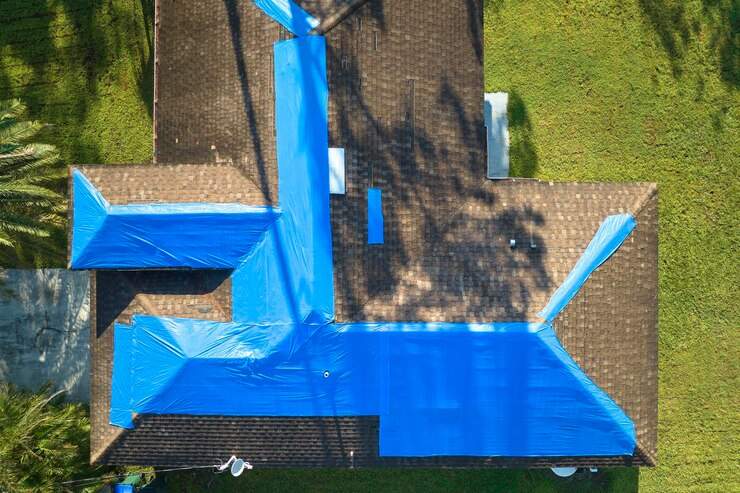If you’re planning a roof replacement in the Twin Cities, one of the most important decisions you’ll make is the type of roof design you go with. The choice affects not just the look of your home, but also how well it performs in Minnesota’s harsh weather.
For many homeowners across Minneapolis, St. Paul, and surrounding suburbs like Edina, Maple Grove, and Eagan, the gable roof stands out as a popular and practical option.
But what exactly is a gable roof—and more importantly, is it the right fit for your home here in the North Star State? Let’s take a closer look.
Key Takeaways
- A gable roof has a triangular shape that fits Twin Cities homes and handles snow and rain very well.
- Strong attic airflow and affordable construction make gable roofs a smart choice for energy savings and budget-conscious homeowners.
- High winds, old framing, or unique home shapes can make other roof styles better than a gable roof design.
- Allstar Construction provides expert local service, lifetime roof guarantees, and free quotes for homes across the Twin Cities metro.
What Is a Gable Roof?
A gable roof is one of the most recognizable roof styles, easily spotted by its triangular shape where two roof sections slope downward from a central ridge.
Think of the classic “A” frame. This clean, pitched design allows rain, snow, and leaves to run off easily, which is a major plus during the Twin Cities’ heavy snowfalls and spring thaws.
You’ll often see gable roofs throughout neighborhoods in Woodbury, Bloomington, and Roseville.
They’re particularly common in Colonial, Craftsman, and Cape Cod-style homes that make up much of the housing stock around Summit Hill in St. Paul or the lakeside communities near Lake Minnetonka.
Why Choose a Gable Roof for Your Roof Replacement?
Gable roofs aren’t just popular because they look good. There are real, practical reasons why they work so well here in the Twin Cities.
Here’s why it could be the right call for your next roof replacement:
Excellent Snow Shedding for Minnesota Winters
The Twin Cities average over 50 inches of snowfall annually, with snowstorms hitting hard from November through March. Gable roofs, with their steep pitch, naturally allow snow to slide off more easily than flatter roof designs.
This reduces the risk of dangerous ice dams forming near the eaves—an issue that plagues homes from Minnetonka to Inver Grove Heights when snow melts and refreezes at the edges.
Better Attic Ventilation for Energy Efficiency
Many homes in the Twin Cities suffer from poor attic airflow, leading to overheating in summer and moisture buildup in winter. Gable roofs often include gable-end vents or are designed in ways that accommodate ridge and soffit vent systems.
If you’re trying to cut down on cooling costs in places like Burnsville, where summer heat and humidity can spike, this kind of ventilation design can make a noticeable difference in your utility bills.
Affordability Compared to Complex Roof Designs
If you live in neighborhoods like Frogtown or Northeast Minneapolis where budget-friendly updates are a priority, you’ll appreciate that gable roofs are often less expensive to build or replace than hip or mansard roofs.
The simpler framing and reduced labor hours translate to a lower overall project cost, especially when you work with a local company that offers transparent pricing with no hidden costs, like Allstar Construction.
Matches the Traditional Aesthetic of Twin Cities Homes
From the older bungalows in Powderhorn to the historic homes along Summit Avenue, many Twin Cities houses were originally built with gable-style roofs.
Choosing a gable roof helps preserve your home’s architectural integrity and may even boost curb appeal if you’re planning to sell in hot markets like Linden Hills or Highland Park.
When NOT to Choose a Gable Roof for Your Twin Cities Home
Gable roofs work great for many homes here in the Twin Cities, but they’re not always the best fit. Here are a few situations where you might want to think twice before going with it:
High Wind Exposure in Open or Elevated Areas
If your home is in an exposed location like a ridge in Plymouth or near the open fields of Hugo, a gable roof might not be the best choice. The tall, triangular shape can catch strong winds like a sail, increasing the risk of damage during thunderstorms or straight-line winds common in the metro’s summer storm season.
In such cases, hip roofs or low-slope designs may provide better resistance.
Poor Structural Support in Older Homes
In historic areas like Cathedral Hill or Prospect Park, older homes may not have the structural support needed to handle the load-bearing angles of a gable roof without extensive reinforcement.
If the roof framing is already sagging or compromised, a gable roof replacement could strain the structure unless major retrofitting is done, which increases costs and complexity.
Homes with Unusual Footprints or Layouts
Some houses in Uptown or Dinkytown have irregular layouts—like L-shaped or cross-gabled structures—that make installing a standard gable roof tricky or inefficient.
For these homes, more adaptable roof styles like a combination of gable and hip sections might offer better coverage, drainage, and visual balance.
Get the Right Roof for Your Twin Cities Home
Don’t settle for a roof that only looks good—get one that works for your home, your neighborhood, and our Minnesota climate.
At Allstar Construction, we specialize in designing and installing roofs that stand up to everything the Twin Cities can throw at them—from ice storms in Eden Prairie to summer downpours in Shoreview.
We offer industry-leading lifetime guarantees, energy-efficient options that can lower your utility bills by up to 20%, and a team that’s fully licensed, insured, and trusted by homeowners across the metro.
Ready to see if a gable roof is right for you?
Reach out today at (763) 373-1066 to get a free quote or schedule a consultation. We’ll walk your roof, talk through your goals, and provide clear pricing with no surprises.


